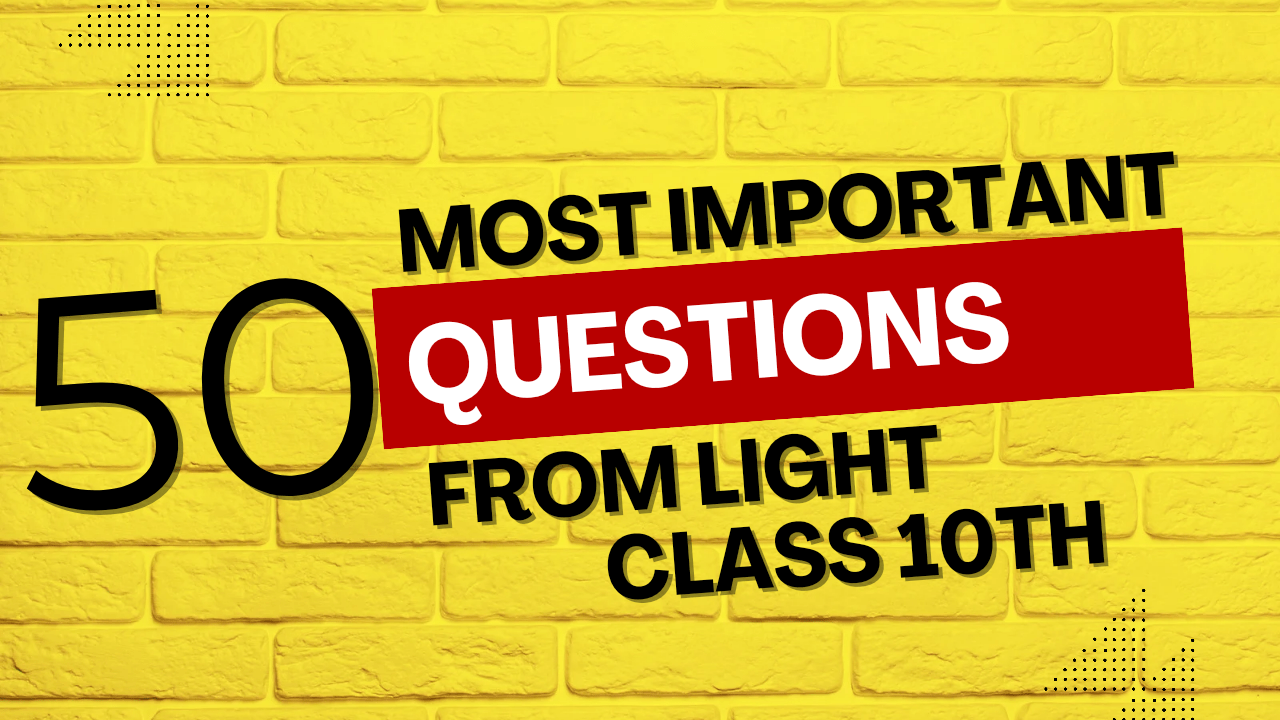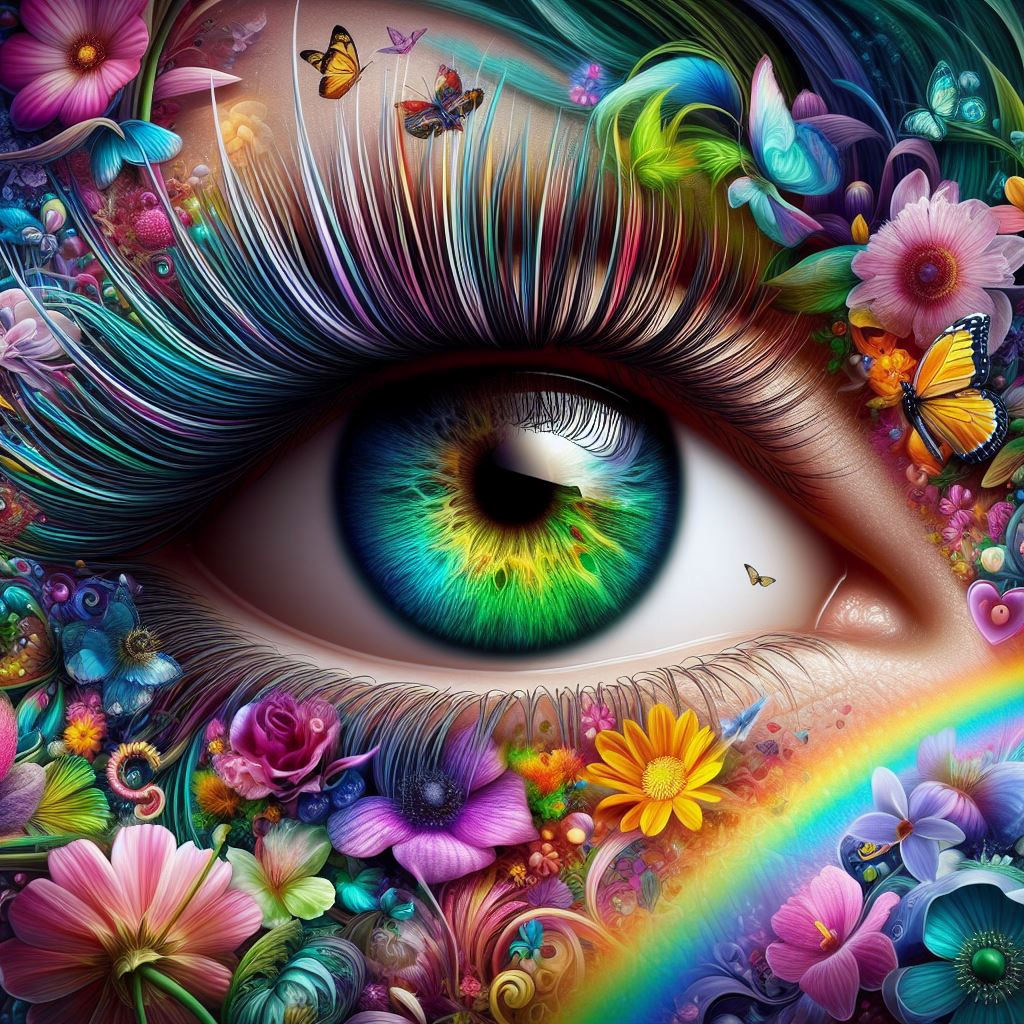Class 10 Light Reflection and Refraction Extra Questions
Master core concepts with these handpicked extra questions for NEET, JEE & Class 10 CBSE exams
📚 Introduction
Light is a fascinating topic in Physics that helps us understand how we see the world. The chapter on “Light – Reflection and Refraction” is crucial for Class 10 students preparing for board exams and competitive exams like NEET and JEE. Below are carefully curated extra questions to strengthen your grip on this chapter.
📝 30 Exam-Oriented Extra Questions with Answers
🔍 Section A: Very Short Answer (1 Mark)
Q1. Define the principal focus of a concave mirror.
Ans: It is a point on the principal axis where light rays parallel to the principal axis converge after reflection.
Q2. What is the nature of the image formed by a plane mirror?
Ans: The image is virtual, erect, and laterally inverted.
Q3. Write the mirror formula.
Ans: 1/f = 1/v + 1/u
Q4. What is the speed of light in air?
Ans: Approximately 3 × 108 m/s.
Q5. State one use of concave mirror.
Ans: Used in torches and shaving mirrors.
Q6. What is meant by refraction of light?
Ans: Bending of light when it passes from one medium to another.
Q7. What is lateral inversion?
Ans: The left-right reversal of an image in a plane mirror.
Q8. Name the mirror used by a dentist.
Ans: Concave mirror.
Q9. Define angle of incidence.
Ans: The angle between incident ray and normal at the point of incidence.
Q10. Why does a pencil appear bent when placed in water?
Ans: Due to refraction of light at the interface of air and water.
📘 Section B: Short Answer Type I (2 Marks)
Q11. State the laws of reflection of light.
Ans: (1) Angle of incidence = angle of reflection. (2) Incident ray, reflected ray and normal lie in the same plane.
Q12. Differentiate between real and virtual image.
Ans: Real image: Formed on screen, inverted. Virtual image: Cannot be captured, erect.
Q13. What is meant by the term “refractive index”?
Ans: Ratio of speed of light in vacuum to that in the medium, n = c/v.
Q14. Why do stars appear to twinkle?
Ans: Due to atmospheric refraction and changing density layers in Earth’s atmosphere.
Q15. A concave mirror forms an image twice the size of the object. If the focal length is 10 cm, find the object distance.
Ans: Use mirror formula with magnification m = -2, focal length f = -10 cm. Object distance = -15 cm.
Q16. What is the power of a lens whose focal length is 25 cm?
Ans: Power P = 100/f = 100/25 = +4D (convex lens).
Q17. Draw a ray diagram for the image formed by a convex mirror when the object is at infinity.
Ans: Image forms at focus, is virtual, erect and diminished.
Q18. Write one difference between convex and concave lens.
Ans: Convex converges light; concave diverges it.
Q19. State the relation between focal length and radius of curvature.
Ans: f = R/2.
Q20. What is the magnification for a plane mirror?
Ans: Magnification = +1.
🧠 Section C: Short Answer Type II (3 Marks)
Q21. Derive the mirror formula with proper diagram.
Ans: Using geometry in ray diagram, derive 1/f = 1/v + 1/u. (Refer NCERT derivation)
Q22. Explain the phenomenon of refraction using a diagram.
Ans: Light bends at the boundary of two media due to change in speed. Diagram shows bending toward/away from normal.
Q23. Draw a ray diagram to show image formation by a concave mirror when object is between focus and pole.
Ans: Image is virtual, erect and magnified, behind the mirror.
Q24. State Snell’s law of refraction and define its terms.
Ans: n = sin i / sin r; where i is angle of incidence, r is angle of refraction.
Q25. Explain the reason behind the bending of light when it enters from air to glass.
Ans: Due to decrease in speed, light bends toward normal.
Q26. State and explain the laws of refraction with an example.
Ans: 1. Incident, refracted ray and normal lie in same plane. 2. Snell’s law. E.g., light bending in glass slab.
Q27. A lens forms a virtual image. What type of lens is it? Support your answer with a diagram.
Ans: Concave lens forms virtual, erect, diminished image. Diagram shows diverging rays.
Q28. How does the apparent depth of a coin in water change due to refraction? Explain.
Ans: Due to bending of light, object appears raised; hence, apparent depth is less.
Q29. Write the characteristics of the image formed by a concave mirror when the object is at the center of curvature.
Ans: Real, inverted, same size, formed at center of curvature.
Q30. Differentiate between reflection and refraction (at least 3 points).
Ans: Reflection: light bounces back; same medium; angle i = angle r. Refraction: light bends; different media; speed changes.
🔗 Related Posts
Did you find these questions helpful?
💬 Share your thoughts in the comments or explore more topics on our blog!


